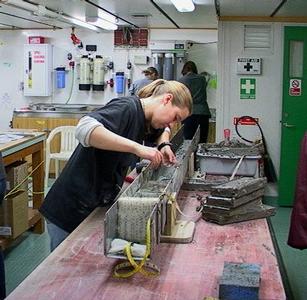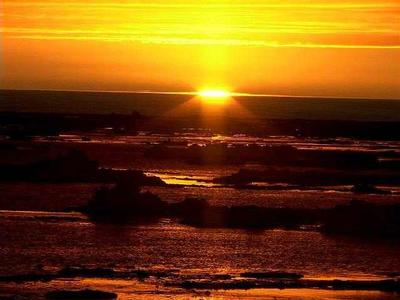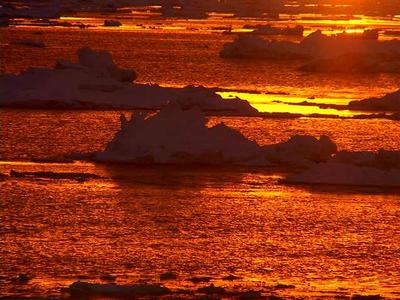
|
|
8 March, 2001
-068 37 Latitude
076 32 S Longitude
Coring
It was hard to believe that less than twelve hours earlier we were
relaxing at Davis station. Now we were coring, bringing up samples of the
ocean floor faster than we could process them. Four Kasten cores came up,
each one needing to be described, cataloged and sampled. We were like a
well-oiled team, flexible in our duties, and diligent to the process. As
soon as one core was complete another was moved onto "the table". As these
were being processed other things were happening: a box core* was brought
up containing an oozing, slimy, smelly sediment that made gym socks smell
decent in comparison. I was foolish enough to volunteer to help process
this box core. Digging through the oozy mud on top into the harder
clay-like layers below was almost comical and near to impossible. The
sediment was cold, at the ocean floor it had started out at around -2 c. It
only became colder on deck with the -12 c weather. We ended up having to
use our bare hands to cap off the ends of tubes that we pushed through the
core in various places. Several times we had to go inside to run warm water
over our frozen fingers. When the sides of the Box core were taken off the
oozy sediment slid out everywhere. The shoveling didn't help get the ooze
off the deck as it had little weight and just stuck to the shovel face.
Finally we took a hose and broom and swept it off the deck to the ocean
below. Even that was difficult as any puddled water tended to freeze in
short order. Jenny, Kelly and I spent more time cleaning up the deck then
getting the samples out. By the time our shift ended we were cold, tired,
and sore. I wish I had a picture of how muddy we had become. I don't think
there was a clean face among us.
After our shift had gone to bed the day shift sampled water at a different
site using the CTD. On the monitor inside,they saw chlorophyll registering
on the bottom of the ocean. This meant that living diatoms had made it to
the bottom of the ocean alive, over 800 meters below the sea surface!
Everyone was most excited for this was a topic talked about but rarely
observed. When I woke up the next night there were 19 bottles of water for
me to filter. I filtered most of the night and next day making extra slides
for myself so I could see these living diatoms for myself using the ships
Zeiss microscope. But alas, before I could do that I helped process yet
another core. I knew we were getting "sedimented out" when people on our
shift started making "hand mud prints" on pieces of paper. We had decided
the lab needed a little decorating so we taped them to the cupboards. After
our shift ended I spent time with my microscope slides. The diatoms were
beautiful, glowing bright red under the special phosphorescent light. I
took pages of notes labeling and drawing what I saw as the water was
sampled at different depths. I followed the diatoms from the surface slide
to the ocean floor. Though tired at the end of yet another long shift, I
decided to join the gang watching a movie in the second floor lounge. I
don't think sitting, down putting my feet up and eating popcorn ever felt
so nice!!! Afterwards several of us watched a beautiful sunset, one of the
best yet.
*a box core is a large grap measuring arout two feet by two feet.




Contact the TEA in the field at
.
If you cannot connect through your browser, copy the
TEA's e-mail address in the "To:" line of
your favorite e-mail package.
|
